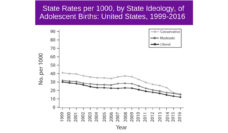Student health surveys are a critical tool for making data-driven decisions to protect and improve the health of young people. As an example, the Centers for Disease Control’s biennial Youth Risk Behavior Surveillance Survey (YRBSS), administered in 44 states in 2019, is designed to monitor health behaviors among middle and high school youth — including substance use, violence, physical activity, mental health, and sexual behaviors.
The YRBSS and similar surveys give schools and communities valuable information about student health and risk behaviors to guide strategies to promote wellbeing. Historically, these surveys have been opposed by a minority of vocal parent voices. Some parents have expressed concerns that asking youth about risky behaviors may prompt them to engage in those behaviors. Concerns have also been raised about access to private or sensitive student data.
In recent months, opposition to student surveys has gathered steam, hooking onto a broader conversation about the role of schools in addressing social issues. Despite the important insights that the health surveys provide and their focus on helping schools support students, media outlets report that some parents — including groups in Colorado, North Carolina and Rhode Island — feel that some survey questions are invasive and inappropriate.
Furthermore, while student data on mental health often provides needed evidence to support the implementation of mental health and social emotional learning, there is growing concern about these programs. An NBC News story recently reported that parent groups in Indiana, Texas, and Virginia are questioning the value of the school-based suicide prevention, mental health, and social emotional learning programs that other parents say have saved their children’s lives.
Public health needs to assert its voice in this conversation, using science to validate the role that student surveys have in informing efforts to promote the health and wellbeing of youth. In fact, in December of 2021, the US Surgeon General’s Advisory on Protecting Youth Mental Health released a report calling for “increas[ing] timely data collection and research to identify and respond to youth mental health needs more rapidly.”
Public health professionals, in partnership with schools and communities, can do the following:
- Share the benefits. It is important to provide examples of how schools/communities have used survey data to positively impact young people. Surveys have identified problematic trends in substance misuse, suicide, and risky behaviors that can be addressed with a timely response. Schools have used survey results to support youth wellbeing through education and prevention programming. Communities have drawn on results to apply for and receive much-needed grant funding. Survey data can also be used to assess the efficacy of policies and programming.
- Address parents’ concerns. A common myth is that surveys introduce students to new types of problematic behaviors and encourage them to engage in the behaviors – like sex, substance misuse, or suicide. There is no truth to this. According to the CDC, there is no evidence that asking students about health risk behaviors causes them to try the behaviors. The factors that influence youth risk behavior are complex and multi-faceted. School surveys benefit students by giving them a voice and the ability to create change in their schools.
- Always be transparent. From data collection to analysis to reporting, parents should be given clear information on the purpose, procedures, and intended use of survey data. Parents should also be assured of safeguards that protect student and family privacy. Parents should have an opportunity to view surveys and/or the option to prohibit their child’s participation. Researchers should explain to parents that questions about demographic characteristics are used to understand patterns of elevated risk and provide appropriate supports, not to violate students’ privacy. Researchers should also provide information on any third-party vendor and their data protection policies.
- Engage parents. Schools and communities should share survey findings with parents and invite them to provide their perspectives. Gathering information from parents on their perceptions of school climate and policy can provide important context to help interpret the data collected from students. When parents are involved, they will feel that the process is more transparent.
Public health, which relies so heavily on data to drive its efforts, has a responsibility to insert a science-based perspective into debates on the value of student surveys. Without a strong, united response on the value of these surveys, we risk losing essential information to guide efforts to improve and protect the health of young people.
Illustration via Getty Images
















